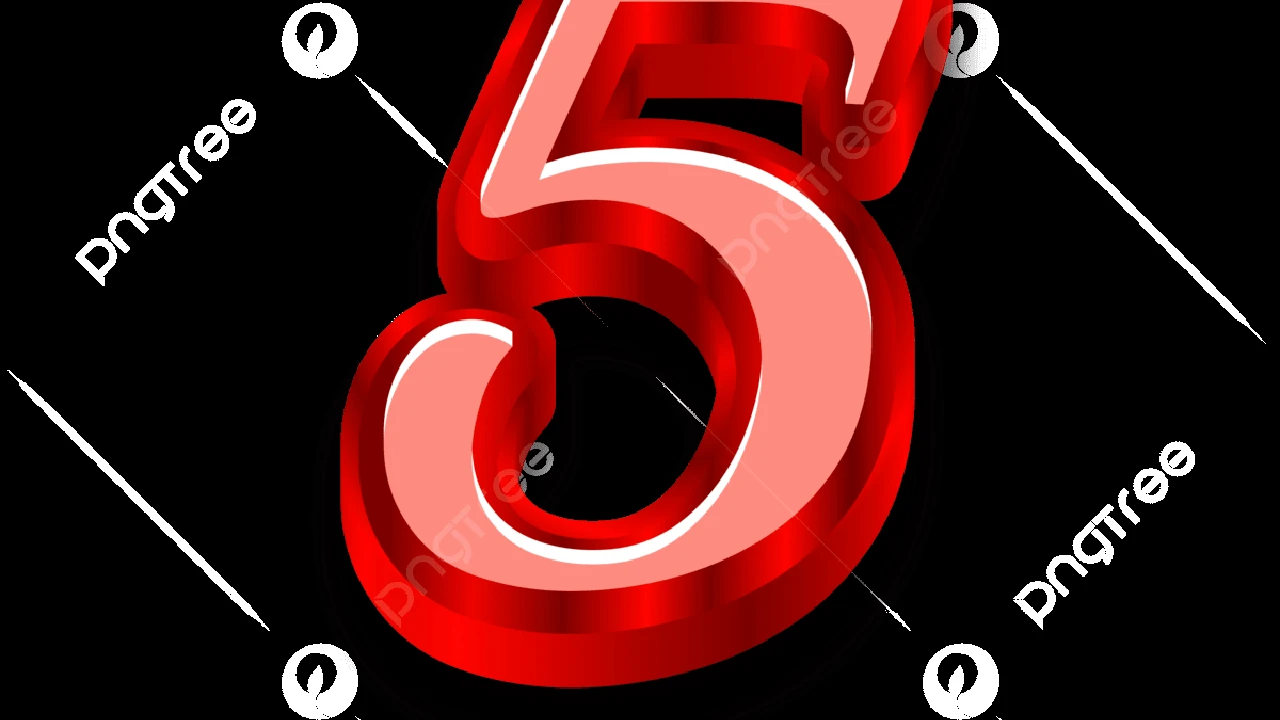7 Essential Steps to Plan Your Retirement
Learn 7 crucial steps to effectively plan for your retirement and ensure financial security in your later years.

7 Essential Steps to Plan Your Retirement
Understanding Your Retirement Vision and Goals
Alright, let's kick things off by getting real about what retirement actually looks like for you. Forget what the magazines say or what your neighbor is doing. This is your retirement. Are you dreaming of endless travel, exploring ancient ruins and exotic beaches? Or maybe you envision a quiet life, tending to a garden, spending quality time with grandkids, and finally finishing that stack of books? Perhaps it's a mix of both – some adventure, some relaxation. The clearer you are about your retirement vision, the better you can plan for it financially. This isn't just about a number; it's about a lifestyle. Think about where you want to live – staying put, downsizing, or moving to a new city or even country? What hobbies do you want to pursue? How much social interaction do you crave? These aren't trivial questions; they directly impact your future expenses and, consequently, your savings goals. For instance, extensive international travel will require a significantly larger nest egg than a quiet life at home. Downsizing your home might free up capital, while moving to a high cost of living area will demand more. So, grab a pen and paper, or open a document, and start brainstorming. Don't hold back. The more detailed your vision, the more motivated you'll be to make it a reality. This initial step is foundational because it sets the stage for all the financial calculations that follow. Without a clear destination, it's tough to map out the journey.
Calculating Your Retirement Expenses and Income Needs
Now that you have a vision, let's put some numbers to it. This is where the rubber meets the road. Estimating your future retirement expenses can feel a bit like guesswork, but we can make educated guesses. A common rule of thumb is that you'll need about 70-80% of your pre-retirement income to maintain your lifestyle. However, this is just a starting point. Your actual needs might be higher or lower. For example, if your mortgage will be paid off, that's a huge chunk of change you won't need. But if you plan on extensive travel or have significant healthcare costs, you might need more. Break down your current expenses and project them into retirement. Think about housing, food, transportation, healthcare (this is a big one, and often underestimated!), entertainment, hobbies, and travel. Don't forget about inflation – the cost of living will likely be higher in 20, 30, or 40 years. Many financial calculators can help you with this, often factoring in inflation. Once you have an estimated annual expense, you can then figure out how much income you'll need from your retirement savings. This leads us to the 'income needs' part. Where will this money come from? Social Security (if applicable), pensions (if you're lucky enough to have one), and most importantly, your personal savings and investments. The gap between your estimated expenses and your guaranteed income sources (like Social Security) is what your investment portfolio needs to cover. This calculation helps you determine your 'retirement number' – the total amount you need saved to support your desired lifestyle.
Assessing Your Current Financial Situation and Savings
Okay, you know where you want to go and roughly how much it'll cost. Now, let's figure out where you are right now. This step is all about taking a brutally honest look at your current financial landscape. Gather all your financial statements: bank accounts, investment accounts (401k, IRA, brokerage accounts), pension statements, and any other assets you have. List out your debts too – mortgage, car loans, credit card debt, student loans. The goal here is to get a clear picture of your net worth. How much do you currently have saved specifically for retirement? Are you contributing regularly to your retirement accounts? What's your current savings rate? This assessment helps you identify any gaps between your current savings trajectory and your retirement goals. If you're behind, don't panic! It just means you need to adjust your strategy. This step also involves reviewing your current budget. Where is your money going? Are there areas where you can cut back to free up more funds for retirement savings? Tools like Mint, Personal Capital, or even a simple spreadsheet can help you track your spending and see where your money is going. Understanding your starting point is crucial for building a realistic and effective retirement plan. It's like checking your fuel gauge before a long road trip.
Choosing the Right Retirement Accounts and Investment Strategies
This is where the magic happens – making your money work for you. There are various retirement accounts, each with its own rules and tax advantages. Choosing the right ones can significantly impact your long-term wealth. Let's break down some popular options and strategies:
Comparing 401(k) vs IRA for Retirement Savings
These are the two heavy hitters in the retirement savings world. Understanding their differences is key.
401(k) Plans: Employer-Sponsored Retirement Powerhouses
A 401(k) is an employer-sponsored retirement plan. The biggest perk? Employer matching contributions. This is essentially free money! If your company offers a match, contribute at least enough to get the full match – it's an immediate 100% return on your investment. 401(k)s typically have higher contribution limits than IRAs, allowing you to save more each year. They come in two main flavors:
- Traditional 401(k): Contributions are pre-tax, meaning they reduce your taxable income in the year you contribute. Your money grows tax-deferred, and you pay taxes when you withdraw in retirement. This is great if you expect to be in a lower tax bracket in retirement than you are now.
- Roth 401(k): Contributions are made with after-tax dollars, so there's no immediate tax deduction. However, your qualified withdrawals in retirement are completely tax-free. This is ideal if you expect to be in a higher tax bracket in retirement or if you want tax-free income in your golden years.
Product Recommendation: Your employer's 401(k) plan. The specific provider (e.g., Fidelity, Vanguard, Empower) will depend on your company. Usage Scenario: Ideal for employees whose companies offer a 401(k), especially with an employer match. Comparison: Higher contribution limits than IRAs, employer match potential. Investment options are usually limited to what your plan offers. Cost: Varies by plan, typically includes administrative fees and expense ratios on funds. Check your plan's fee disclosure.
Individual Retirement Accounts (IRAs): Personal Retirement Control
IRAs are individual accounts you set up yourself, independent of your employer. This gives you more control over investment choices.
- Traditional IRA: Similar to a Traditional 401(k), contributions may be tax-deductible, and withdrawals are taxed in retirement. Deductibility depends on your income and whether you're covered by a workplace retirement plan.
- Roth IRA: Contributions are after-tax, and qualified withdrawals in retirement are tax-free. Roth IRAs have income limitations for direct contributions, but there's a 'backdoor Roth' strategy for higher earners.
Product Recommendation: Vanguard, Fidelity, Charles Schwab. These are highly-rated brokers known for low fees and a wide range of investment options. Usage Scenario: Great for self-employed individuals, those without a 401(k), or those who want more investment flexibility. Also useful for supplementing 401(k) savings. Comparison: Lower contribution limits than 401(k)s, but offer a much wider array of investment choices (individual stocks, ETFs, mutual funds from various providers). No employer match. Cost: Generally very low, often commission-free trading for stocks/ETFs, and low expense ratios for their own mutual funds. Some may have small account maintenance fees, but these are rare with major brokers.
Investment Strategies for Long-Term Growth
Once you've picked your accounts, what do you put in them? This is where your investment strategy comes in. The key for retirement is long-term growth, which usually means investing in a diversified portfolio of stocks and bonds.
Diversification: Don't Put All Your Eggs in One Basket
This is perhaps the most important rule of investing. Spread your investments across different asset classes (stocks, bonds, real estate), industries, and geographies. This reduces risk. If one area performs poorly, others might perform well, balancing out your returns.
Asset Allocation: Your Risk Tolerance and Time Horizon
Your asset allocation (the mix of stocks, bonds, etc.) should be based on your risk tolerance and how far away retirement is. Generally, younger investors with a longer time horizon can afford to take more risk, meaning a higher percentage of stocks. As you get closer to retirement, you'll typically shift towards a more conservative allocation with more bonds to protect your capital. A common rule of thumb is the '110 minus your age' rule for stock allocation (e.g., if you're 30, 110-30 = 80% stocks). However, this is just a guideline; your personal comfort with risk is paramount.
Low-Cost Index Funds and ETFs: Simplicity and Efficiency
For most people, especially those not wanting to actively manage their investments, low-cost index funds or Exchange Traded Funds (ETFs) are fantastic. These funds track a specific market index (like the S&P 500) and offer broad diversification at a very low cost. They generally outperform actively managed funds over the long run because of their lower fees.
Product Recommendation:
- Vanguard Total Stock Market Index Fund (VTSAX / VTI): Covers virtually the entire US stock market. Usage Scenario: Core holding for broad US equity exposure. Comparison: Extremely low expense ratio, highly diversified. Cost: VTSAX (mutual fund) has a 0.04% expense ratio, VTI (ETF) has a 0.03% expense ratio.
- Vanguard Total International Stock Index Fund (VTIAX / VXUS): Provides exposure to international developed and emerging markets. Usage Scenario: Essential for global diversification. Comparison: Low expense ratio, broad international exposure. Cost: VTIAX (mutual fund) has a 0.11% expense ratio, VXUS (ETF) has a 0.07% expense ratio.
- Vanguard Total Bond Market Index Fund (VBTLX / BND): Covers the US investment-grade bond market. Usage Scenario: Provides stability and income, especially as you approach retirement. Comparison: Low expense ratio, broad bond market exposure. Cost: VBTLX (mutual fund) has a 0.05% expense ratio, BND (ETF) has a 0.03% expense ratio.
Alternative: Target-Date Funds: Set It and Forget It
If you want an even simpler approach, consider a target-date fund. These are mutual funds that automatically adjust their asset allocation over time, becoming more conservative as you approach your target retirement year. They are a 'fund of funds' and are designed to be a one-stop solution.
Product Recommendation: Vanguard Target Retirement Funds, Fidelity Freedom Funds, Schwab Target Date Funds. Usage Scenario: Ideal for hands-off investors who want a professionally managed, automatically rebalancing portfolio. Often a default option in 401(k)s. Comparison: Simplest option, but expense ratios are slightly higher than individual index funds. Less control over specific holdings. Cost: Expense ratios typically range from 0.08% to 0.15% depending on the provider and specific fund.
Robo-Advisors: Automated Investing for the Modern Age
For those who want professional portfolio management without the high fees of a traditional financial advisor, robo-advisors are a fantastic option. They use algorithms to build and manage diversified portfolios based on your risk tolerance and goals.
Product Recommendation:
- Betterment: Known for its user-friendly interface, tax-loss harvesting, and goal-based planning. Usage Scenario: Great for beginners, those who want automated tax efficiency, and goal-oriented savers. Comparison: Offers fractional shares, automatic rebalancing, and tax-loss harvesting. Slightly higher management fee than some competitors. Cost: 0.25% annual management fee for balances under $100k, 0.40% for balances over $100k (with access to human advisors).
- Wealthfront: Similar to Betterment, with strong tax-loss harvesting capabilities and a focus on passive investing. Usage Scenario: Good for those seeking robust tax optimization and a hands-off approach. Comparison: Strong tax-loss harvesting, offers a wider range of investment options including direct indexing for larger accounts. Cost: 0.25% annual management fee.
- Fidelity Go: Fidelity's robo-advisor offering, integrating seamlessly with other Fidelity accounts. Usage Scenario: Existing Fidelity customers or those looking for a low-cost entry into automated investing. Comparison: No advisory fee for balances under $25k, then 0.35%. Uses Fidelity Flex funds with zero expense ratios. Cost: 0% advisory fee for balances under $25k, then 0.35% annually.
Remember, consistency is key. Contribute regularly, even small amounts, and let the power of compounding do its work. Review your investments periodically (once a year is usually sufficient) to ensure they still align with your goals and risk tolerance.
Maximizing Your Savings Rate and Contributions
Okay, you've got your accounts and your strategy. Now, how do you supercharge your savings? This step is all about finding ways to put more money into those retirement accounts. The general advice is to save at least 10-15% of your income for retirement, but if you start later or have ambitious goals, you might need to aim for 20% or more. Look for opportunities to increase your contributions. Did you get a raise? Instead of inflating your lifestyle, consider directing a portion of that raise directly to your retirement savings. Received a bonus or a tax refund? Don't just spend it; allocate a significant portion to your retirement fund. Automate your contributions so you don't even have to think about it – set up automatic transfers from your checking account to your IRA or increase your 401(k) deductions. This 'pay yourself first' mentality is incredibly powerful. Also, consider 'catch-up contributions' if you're over 50. The IRS allows you to contribute an additional amount to your 401(k) and IRA once you hit this age, giving you a chance to make up for lost time. Every extra dollar you save now has decades to grow thanks to compounding, making it far more valuable than a dollar saved closer to retirement. Think about cutting unnecessary expenses – that daily latte, unused subscriptions, or impulse purchases. Redirecting even small amounts can add up significantly over time. This step is about discipline and making your retirement savings a priority.
Reviewing and Adjusting Your Plan Regularly
A retirement plan isn't a 'set it and forget it' kind of deal. Life happens! Your income might change, your expenses might shift, market conditions fluctuate, and your retirement vision might evolve. That's why regular reviews are absolutely essential. I'd recommend reviewing your plan at least once a year, or whenever there's a significant life event (marriage, divorce, new child, job change, inheritance). During your review, ask yourself:
- Am I still on track to meet my retirement goals?
- Are my investment allocations still appropriate for my risk tolerance and time horizon?
- Are there any new tax laws or retirement account rules I should be aware of?
- Have my estimated retirement expenses changed?
- Am I maximizing my contributions, especially catch-up contributions if applicable?
This is also a good time to rebalance your portfolio if necessary. Rebalancing means adjusting your asset allocation back to your target percentages. For example, if stocks have performed exceptionally well, they might now represent a larger portion of your portfolio than you intended. You'd sell some stocks and buy more bonds to get back to your desired allocation. Many robo-advisors and target-date funds do this automatically, but if you're managing your own portfolio, it's something to keep in mind. Regular reviews ensure your plan remains relevant and effective, helping you stay on course for a comfortable retirement.
Considering Healthcare Costs in Retirement
This is a big one, and often the most underestimated expense in retirement. Healthcare costs can be a significant drain on your savings, especially in the US. Don't just assume Medicare will cover everything – it won't. You'll likely need to budget for Medicare premiums (Parts B and D), deductibles, co-pays, and prescription drugs. Many retirees also opt for a Medicare Advantage plan or a Medigap policy to cover gaps in original Medicare. Beyond that, consider long-term care. This is care for daily living activities (like bathing, dressing, eating) and can be incredibly expensive, whether it's in-home care, assisted living, or a nursing home. Medicare generally does not cover long-term care. So, what are your options?
- Long-Term Care Insurance: This can help cover the costs of long-term care, but it can be expensive, and premiums can rise. It's worth exploring, especially if you have a family history of needing long-term care.
- Health Savings Accounts (HSAs): If you have a high-deductible health plan (HDHP), an HSA is a triple-tax-advantaged account. Contributions are tax-deductible, money grows tax-free, and qualified withdrawals for medical expenses are tax-free. If you don't use the money for medical expenses, it acts like a traditional IRA after age 65. This is an excellent vehicle for saving for future healthcare costs.
- Self-Funding: Simply saving enough in your regular investment accounts to cover potential healthcare and long-term care costs.
Product Recommendation (HSA Providers):
- Fidelity HSA: Offers a wide range of investment options, no account fees, and low-cost funds. Usage Scenario: Ideal for those who want to invest their HSA funds for long-term growth. Comparison: Excellent investment options, no monthly fees. Cost: No monthly fees, expense ratios on chosen investments.
- Lively: Known for its modern interface and integration with various health plans. Usage Scenario: Good for those who want a user-friendly experience and easy access to funds. Comparison: User-friendly, competitive investment options through TD Ameritrade. Cost: No monthly fees for individuals, investment fees apply.
It's crucial to factor these potential costs into your retirement budget. Ignoring them could lead to a significant shortfall later on. Talk to a financial advisor specializing in retirement planning to get a more personalized estimate for your potential healthcare expenses.
Seeking Professional Financial Advice
While you can certainly plan for retirement on your own, sometimes a professional can provide invaluable guidance, especially as your financial situation becomes more complex. A good financial advisor can help you:
- Create a personalized retirement plan tailored to your specific goals and risk tolerance.
- Optimize your investment portfolio and asset allocation.
- Navigate complex tax strategies related to retirement withdrawals.
- Plan for healthcare costs and long-term care.
- Develop an estate plan.
- Provide emotional support and keep you disciplined during market downturns.
When looking for an advisor, seek out a fee-only fiduciary. 'Fee-only' means they are paid directly by you (hourly, flat fee, or percentage of assets under management) and don't earn commissions from selling products. 'Fiduciary' means they are legally obligated to act in your best interest. This is crucial. Interview a few advisors to find someone you trust and feel comfortable working with. They can be a valuable partner on your journey to a secure and fulfilling retirement.
:max_bytes(150000):strip_icc()/277019-baked-pork-chops-with-cream-of-mushroom-soup-DDMFS-beauty-4x3-BG-7505-5762b731cf30447d9cbbbbbf387beafa.jpg)






